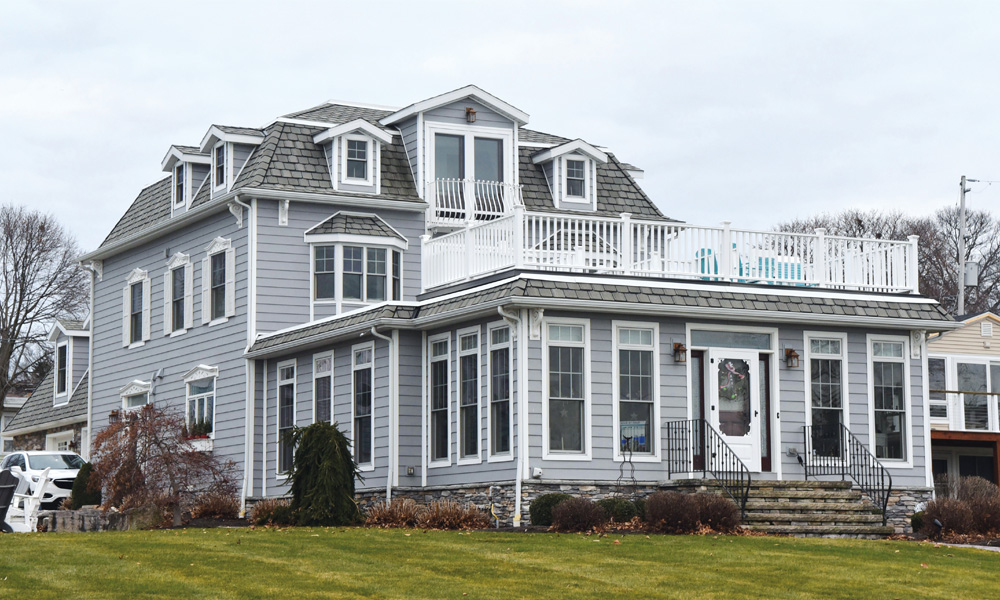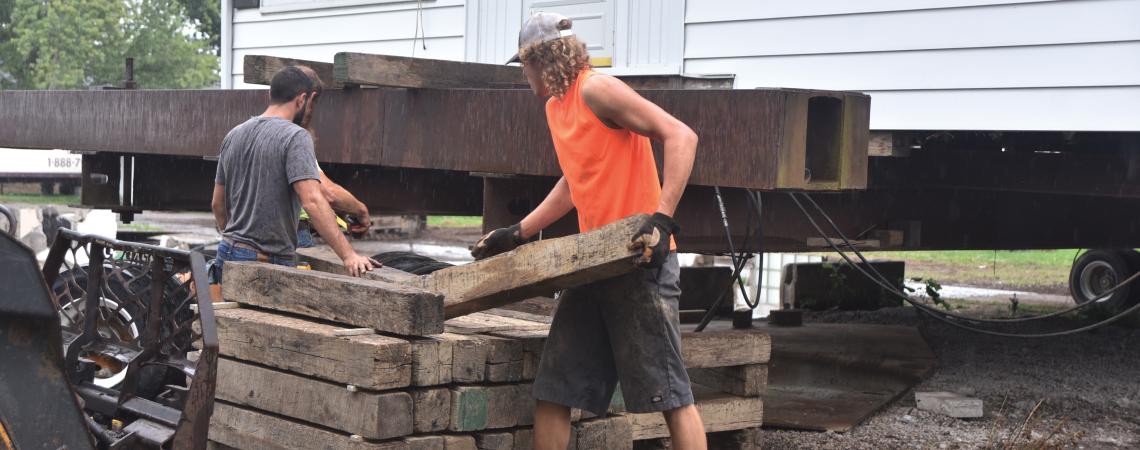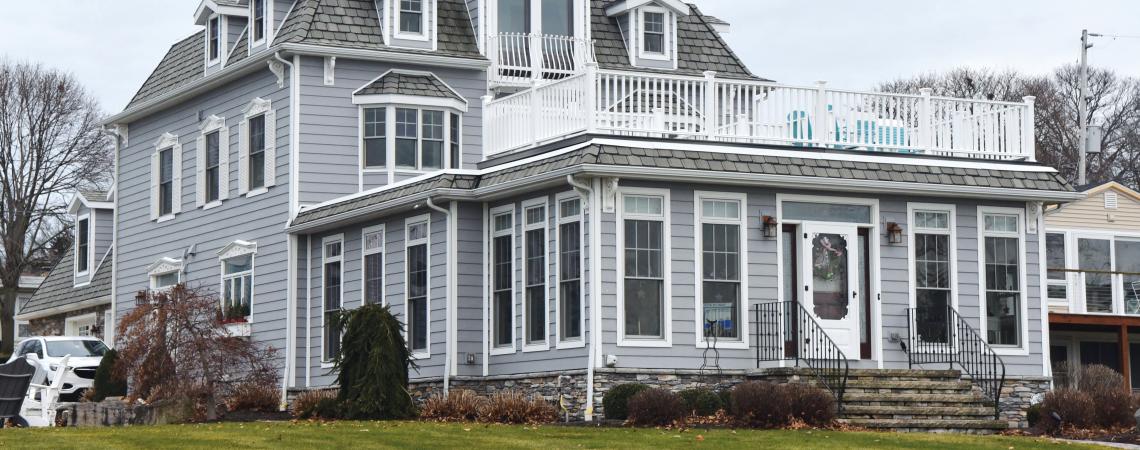Jim Klier has been a mover for 39 years. Admittedly, the Wellington resident and Lorain-Medina Rural Electric Cooperative member isn’t real good at carefully packing all your possessions, loading them into a big rig, and driving them somewhere else.
Instead, he just moves everything at once. Like your entire house. And very carefully.
Jim and the rest of the folks at Klier Structural Movers have made hundreds of such moves over the years. They have transported buildings both commercial and residential, though most are houses. The longest trip was a home that went down the road about 25 miles. The shortest? About 4 feet (see sidebar story below).
Experienced Klier crew members place long steel beams beneath a structure, then slowly raise it.
Klier has moved plenty of homes for lots of different reasons — some legal, like for zoning issues; others more sentimental. Klier’s moved a lot of older homes. Much older. Like an 1813 timber frame home on Lake Erie.
“Oh, heavens yes,” he says. “A home that’s been in the family for generations, for example. You really have to love the house to do something like that, to go through that process.”
Not all the structures he’s moved are historic or sentimental — or even old. In fact, just the opposite. Some haven’t even been lived in yet or are still under construction. “We’ve done new houses, never occupied. Sometimes they’re not even finished,” he says.
Sometimes builders make mistakes, like putting up a house on the wrong spot, perhaps straddling a property line or facing the wrong direction. Other times, issues arise with a new foundation, or groundwater wells up suddenly, indicating a likely future of constant pumping. Other jobs have included moving a structure out of an existing flood zone or adding a basement where none was.
Occasionally, it’s a combination of sentimentality and business.
When Mike Bassett’s investment group purchased waterfront property in Port Clinton, their plan was to build 14 homes on the site, which features a 125-foot sandy Lake Erie beach. But a two-story, 3,300-square-foot home sat directly where the main driveway would be. In Ottawa County, tearing down vintage homes on the water and replacing them with new homes and condominiums has been in vogue for years. But he questioned razing what seemed like such a great old house.
“It’s got high ceilings, very large wood molding, just a lot of charm,” he says. “I just know someone will fall in love with it because it’s very large and well-built. To me it just seemed like it would be a terrible waste to tear it down.”
So Bassett contacted Klier and had the home moved — about 100 feet over the course of a couple months, and in the process, rotated about 90 degrees. Bassett estimated the cost of the raw lumber and materials in the home, circa 1934, would run about $100,000 today. He said after some remodeling and updating, it will be a beautiful nearly century-old home that’s just like a new home.
So just how do you move a structure? According to Klier, the answer is, “Very carefully.” But at its simplest: Jack it up and drag it out. Klier has a yard full of equipment — several hundred tons of steel beams, a fleet of specialized hydraulic dollies, and hundreds of fat, heavy timbers. With these items, experienced Klier crew members place long steel beams beneath a structure, then slowly raise it.
“We push everything up evenly,” Klier says. “The structure rises on a completely level, even plane.”
But first there’s plenty of measuring, planning, contemplating.
“We definitely spend a lot of time figuring out what we’re going to do before we do it,” he says. While they’ve had a few minor mishaps over the years, he says they’ve never dropped a structure or suffered any catastrophic disasters.
Moving a structure is not inexpensive, relatively speaking. At the minimum, a shorter, simpler move is likely to run between $30,000 and $40,000, and the price goes up from there, depending on several factors. “It’s very viable in the right situation,” Klier says, “but a terrible waste of money in the wrong one.”
Just a slight twist
When Sally DePerro bought what had originally been an 1880 vacation cottage for a member of the Gamble family (as in Procter & Gamble), it was a beautiful home in a quaint spot overlooking the LaFarge shipping dock, where lake freighters come and go in Marblehead.
“When we bought it, it needed some TLC,” DePerro says. “And also we wanted a garage.”
As it happened, the home sat at a slight angling opposition to neighboring structures so that additions were off-limits, zoning wise. “They were going to add onto the front and the rear of the home,” Klier says. “It wasn’t sitting in line with the property boundaries.”
And so for a pretty penny, which in DePerro’s view was worth a pound of gold, Klier and his crew cocked the now-massive 4,700 square-foot structure just enough to come into line with zoning rules and leave room for the desired additions. The total distance was about 4 feet — still the shortest move his company has undertaken. “The move made everything line up,” he says.
“And while all that was happening we dug a deeper basement because it wasn’t a full basement,” DePerro says. “It sounds crazy, but we got a lot out of that. In the end, moving the house just a few feet gave me everything I wanted.”











